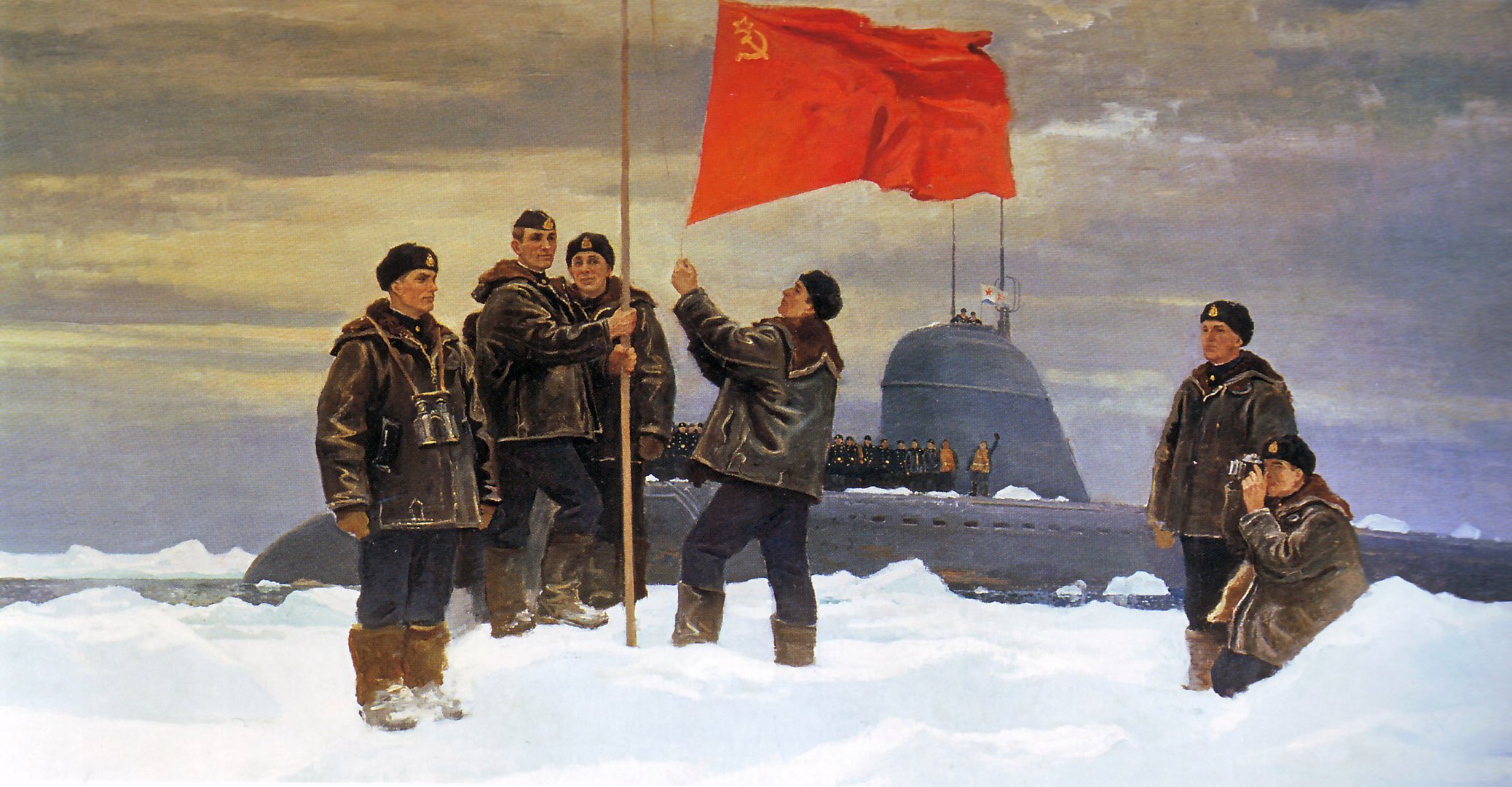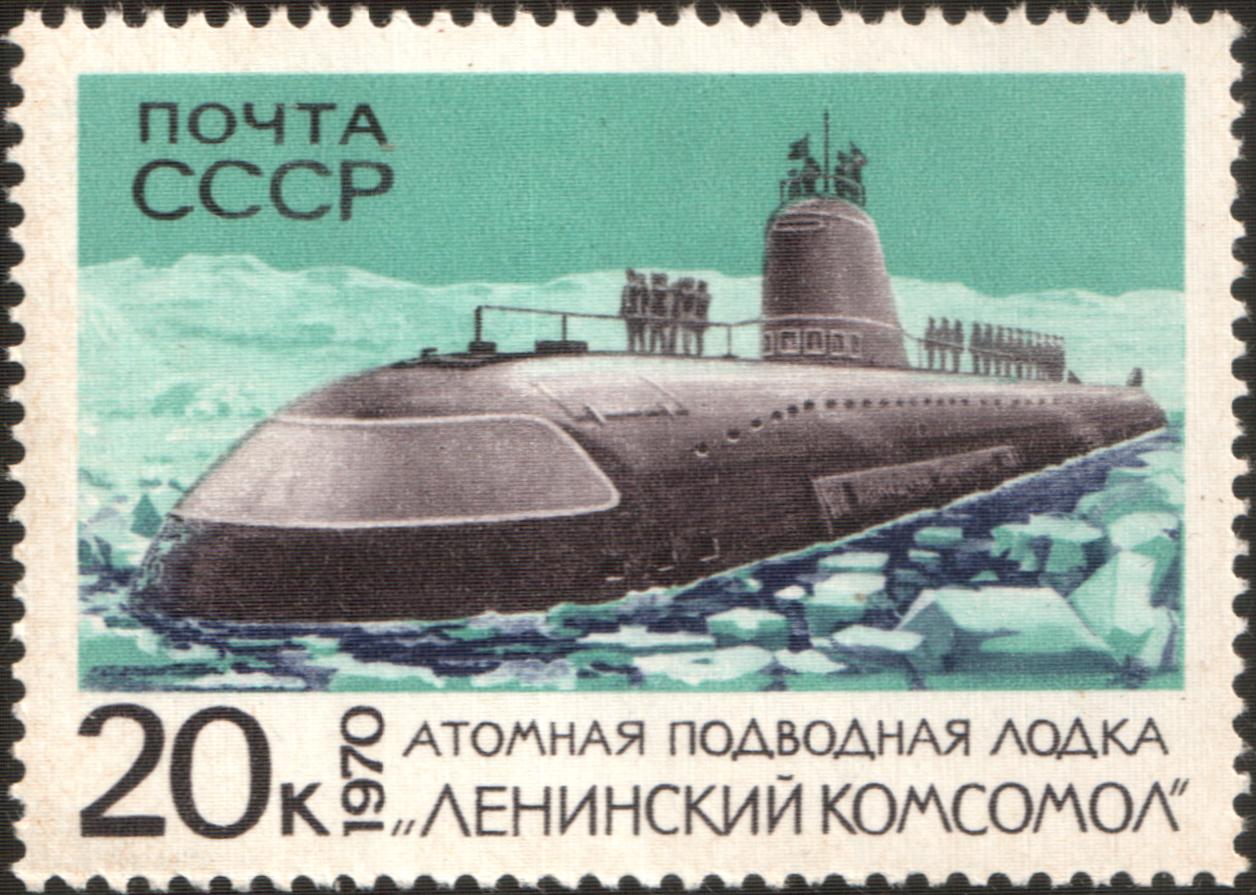Russian Navy sailors are set to raise the flag of the first Soviet nuclear submarine, “Leninsky Komsomol,” in the Arctic to commemorate the 65th anniversary of the submarine’s acceptance, announced the Russian Ministry of Defense.
The Ministry revealed that, following the directive of Admiral Nikolai Yevmenov, the Commander-in-Chief of the Russian Navy, the symbolic flag will be transported to the Arctic by a warship.
The flag, bearing the symbol of the historic submarine, will be positioned at a designated location in the Arctic zone, the Ministry added.
Sevmash’s General Director, Mikhail Budnichenko, presented the cloth with the ship’s emblem to the Navy’s Commander-in-Chief ahead of the anniversary.
Furthermore, Admiral Yevmenov expressed enthusiasm for this military, historical, and patriotic mission, emphasizing the significance of honoring the history and development of the Russian nuclear submarine fleet, a cornerstone of the nation’s naval potential.
He also underscored the flag’s representation of Russia’s unequivocal commitment to Arctic development. However, the Russian Defense Ministry has not provided any precise date or timeframe for accomplishing this objective.
Meanwhile, the Admiral Golovko frigate of Project 22350, equipped with the Kalibr-NK missile system and constructed at Severnaya Verf, is set to be officially handed over to the Russian Navy on December 25, according to a source closely associated with the Russian Navy, as reported to TASS.

“The transfer of the Admiral Golovko to the Navy, the third hull of project 22350 for the construction of Severnaya Verf, is scheduled for December 25,” the report said.
In November, it was reported that Admiral Golovko had returned to the Baltic for an audit after completing tests.
During the August Army 2023 International Military-Technical Forum, Severnaya Verf’s head, Igor Orlov, indicated that the frigate’s tests would conclude in the “coming weeks.” The Admiral Golovko represents the third hull of Project 22350.
Soviet’s First Nuclear Submarine
Over six decades ago, the K-3 “Leninsky Komsomol” was launched as the Soviet Union’s first nuclear-powered submarine.
Operating under the banner of the Northern Fleet, the submarine made history by becoming the first Soviet vessel to reach the North Pole beneath the ice in June 1962, four years after the US Navy’s “Nautilus” accomplished a similar feat.
Two water-cooled reactors fueled the submarine. The K-3 garnered renown as a symbol of the Soviet Union’s prowess in underwater warfare.
However, it also etched itself into history due to multiple malfunctions and a tragic fire that claimed the lives of 39 crew members on September 8, 1967, while transiting the Norwegian Sea.
Following the tragic incident, an official Soviet Naval investigation determined that the fire resulted from an explosion, likely triggered by pressurized hydraulic fluid catching fire. However, subsequent research has raised questions about potential mechanical or human errors being contributing factors.

Rumors circulated about the discovery of a lighter in the compartment where the flames originated, suggesting the possibility of smoking on board the submarine.
Despite significant interior damage from the fire, the submarine underwent repairs and returned to active service. After being retired from service in 1988 and marked for scrapping, the K-3 underwent a significant transition when it was relocated to the Nerpa shipyard in 2005.
Subsequently, efforts to dismantle the reactor compartment began, which resulted in a reconstructed hull, albeit shorter at 107 meters without the reactor compartment.
As the prototype for Project 627 (NATO: November-class), the K-3 influenced the construction of 12 similar submarines under Project 627A. Among them was the K-159, which sank north of Murmansk in 2003 and remains on the seafloor.
In October 2020, a decision was made to transport the K-3 to Kronstadt for inclusion in the naval museum. The K-3 is refurbished at the Museum of Navy Glory in Kronstadt.
Interior restoration and the installation of a glass dome are underway, setting the stage for its future opening to visitors and preserving the legacy of this historic nuclear-powered submarine.
Following restoration, the submarine will have monitors displaying video content, monophones, projections, and various interactive elements. These additions aim to provide visitors with an immersive experience and allow them to delve into the rich history of this legendary submarine.
- Contact the author at ashishmichel(at)gmail.com
- Follow EurAsian Times on Google News




